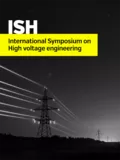Summary
To master the partial discharge (PD) decomposition characteristics of SF6 gas under different negative DC voltages initiated by the metal protrusion insulation defect, the author use a needle-plate electrode to simulate the most typical insulation defect (metal protrusion) in DC gas-insulated switchgear (DC-GIS) and conduct the decomposition experiments of SF6 gas under different negative DC voltages. The PD signals were detected by the pulse current method and the concentrations of SF6 decomposed components were measured by a Gas Chromatography-Mass Spectrometry (GC/MS). This paper further studied the decomposition characteristics of SF6 gas under five negative DC voltages (47 kV, 57 kV, 67 kV, 74 kV, and 79 kV), the results show that PD initiated by the needle-plate electrode will cause SF6 decomposing into five stable decomposed components such as CF4, CO2, SO2F2, SOF2, and SO2. The relationship of their concentrations is SOF2 > SO2F2 > CO2 > SO2 > CF4. In addition, the relationships between the formation rates of SF6 decomposed components and the applied voltages are obtained. The concentrations and formation rates of SF6 decomposed components can be used as the characteristic parameter to diagnose the PD severity in DC-GIS.
Additional informations
| Publication type | ISH Collection |
|---|---|
| Reference | ISH2017_245 |
| Publication year | |
| Publisher | ISH |
| File size | 222 KB |
| Pages number | 6 |
| Price for non member | Free |
| Price for member | Free |



